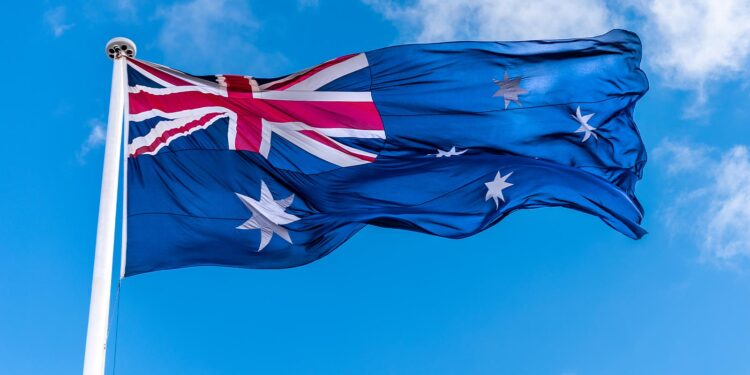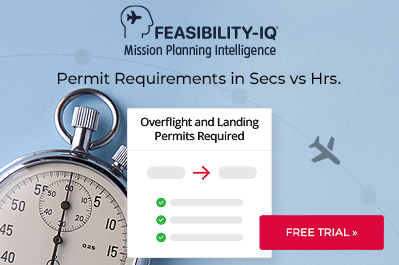Update! Transportation Security Program (TSP) requirements in Australia for Business Aircraft Operators

Transportation Security Program (TSP) requirements have been a challenge for General Aviation (GA) operators to Australia over recent years. However, practical impact of this regulation has significantly diminished since March 2012. While all previous TSP regulations remain in place, far fewer GA operations to Australia are now covered by TSP requirements.
UPDATE: May 14, 2019
The Australian Transportation Security Program (TSP) has been around for years; however, a new agency, the Department of Home Affairs, is now governing the program and has interpreted the regulations differently since when the program was first implemented.
Since inception the program was only determined to be required for commercial and unscheduled commercial operations (charter), exempting private non-revenue flights.
The Department of Home Affairs is requiring that ALL operations into Australia have the TSP, including commercial, unscheduled commercial, and private.
If you need assistance applying for a TSP, our Universal Aviation Australia office can help.
Here’s what you need to know:
1. What is an Australian TSP?
A TSP is a legally binding document, submitted for approval to Australian authorities, showing that an aviation operator has an approved TSP in place. The purpose of a TSP is to demonstrate that an operator establishes and maintains a high level of security management in accordance with Australian regulations. For any operator falling under the definition of a “prescribed air service,” there’s no alternative other than to comply with this regulation, even if the operator has an aviation safety management system (SMS) or non-Australian security certification in place.
2. When TSPs became a requirement
The Aviation Transport Security Act 2004 and Aviation Transport Security Regulations 2005 require all aviation industry participants to operate an approved TSP.
3. Governing authority responsible for TSPs and its validity period
TSPs are administered by the Department of Home Affairs: Australian TSPs have validity for five years before they have to be renewed.
4. Operations that require TSPs
Anyone who provides, or offers to provide, transportation of persons and/or goods by air is an ‘”aircraft operator” for the purposes of the Aviation Transport Security Act 2004 (ATSA) and Aviation Transport Security Regulations 2005 (ATSR).
All aircraft operators have a legal obligation to report aviation security incidents and to ensure that there are measures in place to prevent access to the aircraft by unauthorised persons.
Operators of the following air services are also required to hold a transport security program (TSP):
- A regular public transport (RPT) operation
- An air service in which a jet is used; or
- An air service in which an aircraft with a certified MTOW greater than 5,700kg is used.
These types of air services are called “prescribed air services.”
In addition to holding a TSP, operators of prescribed air services must also undertake pre-flight security checks (ATSR regulation 4.69) and comply with weapons/prohibited item restrictions (ATSR regulations 4.59, 4.59A and 4.65). There are also restrictions on who may enter the cockpit (ATSR regulation 4.67).
The ATSA and ATSR do not generally require closed charter/private flights to undergo screening before take-off. However, the particular security measures and procedures in place at individual airports may result in persons/items being required to undergo screening in order to access the aircraft/pass through certain points of the airport.
5. Lead time needed to obtain a TSP
It can take up to 60 days for the review of a TSP application by the Department of Home Affairs. If an operator has a TSP request in process and travels to Australia, he or she may or may not be prosecuted for not having an approved TSP. It’s at the discretion of authorities to determine what action to take. Penalties (ranging up to a maximum fine of 22,000 Australian dollars) are in cases of “prescribed air services” operating to Australia without a TSP and without having requested a TSP. Such non-compliance may be discovered during the course of random ramp checks.
6. Information needed to obtain a TSP
Various detailed forms and questionnaires need to be completed and must be signed by a high-ranking company officer. Required information covers everything from operator name and seating capacity of the aircraft to planned procedural responses in the event of terrorism and/or catastrophic incidents. Operators are required to estimate the impact and cost of any security incidents that may take place stemming from aircraft operations to Australia. It’s best to contact your 3rd-party provider to obtain the necessary forms and questionnaires needed for the TSP application.
7. One TSP covers an entire fleet
A TSP covers all aircraft registered to a particular operator. Keep in mind, however, that TSP revisions may be necessary from time to time.
8. When revisions are required
A TSP must be revised if an aircraft is added and/or removed from the fleet; if there’s a significant change to the aircraft operator’s security policies; if there’s a change in operator or company name, company security contact officer or a senior company officer; or if anyone significant in the flight department is replaced. TSP revisions are accomplished using a Section 23A form, and that must be signed by a senior company officer. TSP revision turnaround time is generally about one week. Then, the changes are sent to the authorities for their approval, which can take up to two weeks. However, like an initial TSP, please allow up to 60 days for the review of changes. Operators with a valid TSP pending confirmation of alterations can still operate to Australian airports with the current TSP.
9. A 3rd-party provider should be involved in the application process
Due to the complexity of the TSP application process, it’s best to use the services of a knowledgeable 3rd-party provider with good lines of communication to the appropriate TSP governing entity. If an operator chooses to have a 3rd-party provider assist with a TSP application, then a letter of authorization allowing the 3rd-party provider to act on its behalf must be submitted. Using a 3rd-party provider during the application process does not bind the operator to utilize the services of the 3rd-party provider when traveling to Australia.
Universal Aviation Australia can help coordinate your TSP. You can contact our team at australia@universalaviation.aero.
Conclusion
If your operations to Australia fall into or may fall into a “prescribed air service” category, it’s best to start the TSP application process without delay. Time is needed to source required information and to process TSP applications. You’ll need to have a security contact officer within your flight department, and required application forms must be signed by a high-ranking company officer. Best practice, due to complexity of the application process, is to involve a 3rd-party provider in the process.




